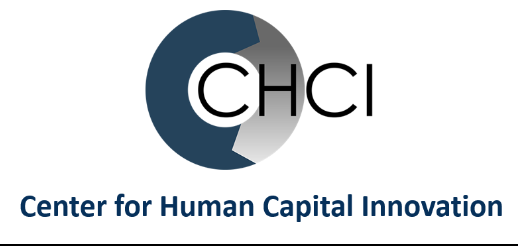
How to Make Your AI Strategy Work
Artificial Intelligence (AI) is both over-sold and under-used. Some are dazzled by demos and new tools; others are tired of promises without payoff. The truth sits somewhere in between: organizations that adopt AI with focus, clear guardrails, and continual learning are unlocking real advantages. If you’re not seeing bottom-line improvements yet, though, you’re not alone. McKinsey’s 2025 survey found most organizations still haven’t realized positive financial impact from generative AI because adoption and scaling practices often are not in place. In short: the technology is outpacing the operating model. The fix isn’t “more AI”; it’s better leadership choices: rewiring workflows, assigning accountability, and governing use with purpose.
When AI tools are introduced without active engagement by leadership and management, organizations risk creating confusion, resistance, or even operational breakdowns. Teams may be confused about what’s changing, unsure how to use new tools effectively, or worried about what it means for their jobs. AI can quickly become a disconnected experiment—something a few people tinker with—rather than a meaningful solution that improves how work gets done. However, when leaders and supervisors are engaged, the dynamic shifts. They can connect the dots between business goals and day-to-day tasks, set clear expectations and purpose, and create space for people to learn and adapt. AI adoption works best as a team effort led by those who are tuned into its impact on the workforce while they explore the opportunities it presents.
Read on as we offer a practical path to move from hype to impact with an approach that grows talent, protects continuity, and blends artificial and human intelligence into everyday work.
What’s Working?
Despite the perceived lag in broader ROI, targeted deployments are delivering measurable gains. Consider the following:
- Customer support agents equipped with a gen-AI assistants resolve more issues per hour—about a 14% productivity gain on average, with less experienced representatives seeing the biggest improvement. That matters for cost, service levels, and attrition.
- Professional writers complete mid-level tasks much faster with better quality when using a tool like ChatGPT—evidence from randomized trials shows meaningful improvements in both speed and output.
- Coders (software developers) complete specific tasks dramatically faster with GitHub Copilot; a controlled experiment showed a 55.8% speed increase for an HTTP server task.
These are just a few of the many examples that demonstrate how intentionally shaping the conditions around the use of AI—focused use cases, clear task design, and teams learning how to work with AI programs—can generate impressive returns when used to augment human efforts.
Replace “Hands-Off” with “Designed Use”
Companies that see improved productivity with AI don’t simply run random pilots; they authorize controlled experiments linked to business needs or objectives. MIT Sloan’s advice is blunt: if you want AI-driven productivity, start by redesigning tasks and workflows, then match tools to the jobs—not the other way around. That shift, from tool-first to work-first, is the hallmark of mature programs.
Culture and capability matter as much as the technology. Years before gen-AI, Harvard Business Review authors argued that the central challenge in AI adoption is culture: bridging the data side and the business side through translators, training end users, and establishing where responsibilities live. Those lessons are even more relevant as gen-AI permeates non-technical roles.
In a recent article from The Conference Board, the authors identify four common obstacles that can help overcome common hurdles to AI adoption:
Four Common Obstacles That You Can Fix
- Rushed evaluation. Teams jump on the newest tool without structured assessment, adequate testing time, or business-case criteria. Instead, decisions about integrating AI tools should be deliberate, considering organizational needs and goals before selecting a new technology.
- Shallow learning culture. Curiosity is discouraged, so growth mindsets and psychological safety aren’t nurtured, which causes adoption to stall. Prepare workers before introducing new technology. Encourage, and possibly even reward, those that embrace a growth mindset in their approach to AI.
- AI is confined to “the tech folks.” Limiting AI to technical teams leaves other areas, such as marketing, HR, finance, and operations, unable to access the potential gains in their job functions. Ensure training is available to everyone in the organization in order to enhance growth pathways and prevent attrition.
- One-and-done training. Treating AI learning as an event instead of a continuous, in-the-flow practice can kill momentum. Consider multiple formats of learning opportunities, including formal, informal, social, experiential, and self-guided, to continuously upskill employees and create an ecosystem that encourages discovery and experimentation.
Six Roles That Turn Pilots into Performance
To counter those obstacles, consider the following roles that connect evaluation, compliance, and innovation into one operating rhythm. Remember, these are not new jobs; they are simply hats that team members can wear in their current positions. Use these roles to create a pipeline from “try” to “prove” to “scale,” with clear go/no-go criteria and learning loops at each stage.
- Examiner: tests usefulness and relevance of outputs for specific tasks.
- Auditor: checks alignment with strategy, policies, ethics, and risk appetite.
- Subject Matter Expert: optimizes use to ensure utility and consistency with goals and values.
- Replicator: identifies what works for one area and establishes how to scale it organization-wide.
- Co-Creator: identifies experiments across teams to initiate cross-departmental learning opportunities.
- Strategist: looks at the big picture and advises where to prioritize innovation and how combinations of uses could impact the broader industry.
A Practical Playbook for Engagement
Now that we have looked at what to consider, it’s time to discuss how to implement in practical terms. Below, we provide a seven-step approach that balances ambition with guardrails:
- Start with business problems, not platforms. McKinsey finds that companies seeing impact are redesigning workflows and giving senior leaders accountability. They identify high-friction, high-volume tasks (e.g., claims triage, collections outreach, talent sourcing), and then they define success in concrete, measurable terms such as cycle time, quality, cost-to-serve, or risk reduction.
- Redesign the work before you choose the tool. Map the task, handoffs, and failure modes first. Decide where AI drafts, where humans decide, and where the system escalates. Treat prompts, use cases, and review checklists as part of the “work design,” not afterthoughts.
- Create safe, sanctioned sandboxes. Move beyond ad-hoc tinkering. Stand up a secure environment with access to approved models, synthetic or redacted data, and clear usage policies. Make it easy for teams to run tests with a simple benefits/risk template reviewed by an Examiner and Auditor per the roles described above.
- Make learning continuous and visible. Don’t stop at one-time training. Blend micro-lessons, shadowing, office hours, and community showcases. Encourage “prompt clubs.” Recognize and reward those who contribute to use cases.
- Prove value for individuals, not just the P&L. Adoption sticks when people feel more competent, autonomous, and connected on a personal level. Research from MIT SMR–BCG shows organizations are far more likely to receive financial value when individuals also see value in AI during their day-to-day work. Build metrics that capture both.
- Institutionalize the six roles. Use the Examiner/Auditor/Subject Matter Expert to keep experiments safe and useful. Deploy the Replicator/Co-creator/Strategist to scale wins and direct investment. Rotate team members through these roles so the capability spreads and risk isn’t concentrated in one person or team.
- Publish a simple scoreboard. Track a handful of measures per use case: time-to-complete, quality/accuracy, customer or employee satisfaction, error or policy violations, rework, and dollars to implement and run. Sunset underperforming use cases and re-invest where learning curves are still steep.
Guardrails That Encourage Momentum
The best guardrails are enabling, not punitive. Deloitte’s 2025 Human Capital Trends points to a deeper tension that must be navigated: balancing agility with stability and trust. Employees want predictability, even as AI drives change. Set stable principles (e.g., no layoffs from AI productivity gains without reskilling offers), then innovate within them. Perfection isn’t the goal; controlled improvement is. Use staged access (concept to pilot to limited implementation to broad implementation) with explicit criteria for when an experiment is cleared for advancement to the next stage or canceled.
You don’t need to guess the next model breakthrough to realize returns on AI. Start where work is ready to be redesigned. Make learning continuous. Assign roles that convert experiments into scaled improvements. Measure what matters for people and the business. If you do those things your organization can gradually build an advantage that compounds.
Where have you seen success when introducing AI in your organization? Did you encounter something you wish you had known ahead of time? Leave a comment below, send us an email, or follow us on LinkedIn.


Leave A Comment